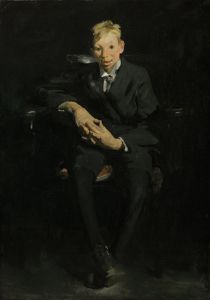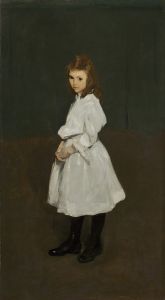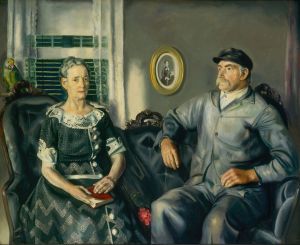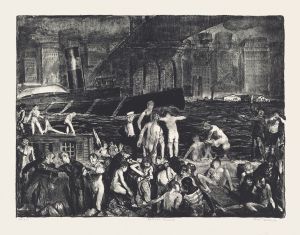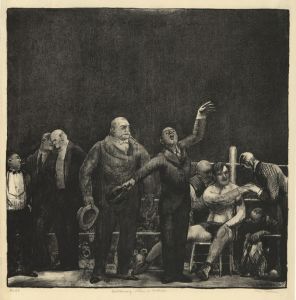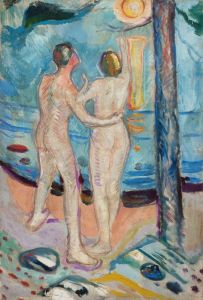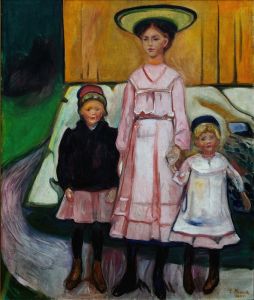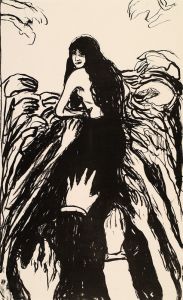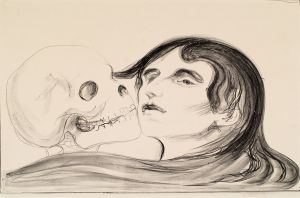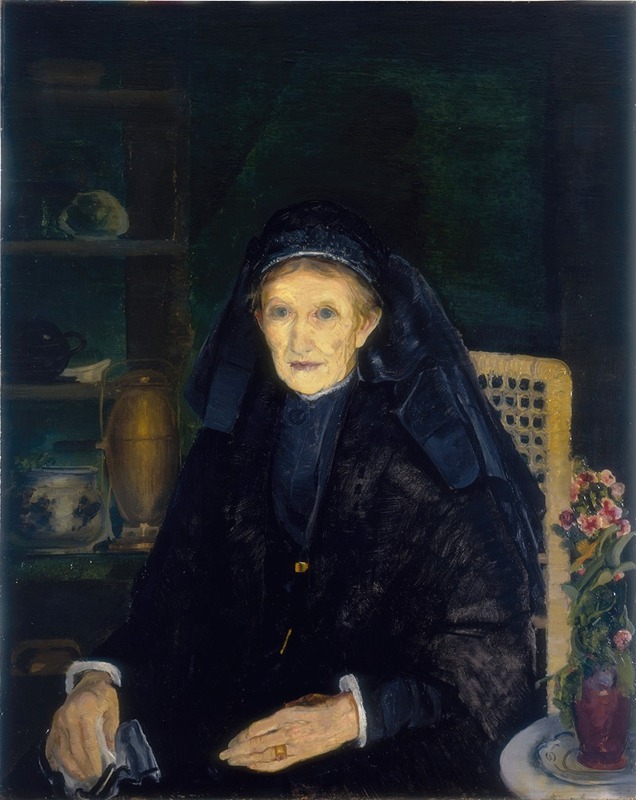
The Widow
A hand-painted replica of George Wesley Bellows’s masterpiece The Widow, meticulously crafted by professional artists to capture the true essence of the original. Each piece is created with museum-quality canvas and rare mineral pigments, carefully painted by experienced artists with delicate brushstrokes and rich, layered colors to perfectly recreate the texture of the original artwork. Unlike machine-printed reproductions, this hand-painted version brings the painting to life, infused with the artist’s emotions and skill in every stroke. Whether for personal collection or home decoration, it instantly elevates the artistic atmosphere of any space.
George Wesley Bellows was an American realist painter known for his dynamic and vivid depictions of urban life in New York City during the early 20th century. Among his diverse body of work, "The Widow" stands out as a poignant exploration of human emotion and experience. Painted in 1921, this work reflects Bellows' mature style, characterized by a deep understanding of human psychology and a mastery of composition and color.
"The Widow" captures a moment of profound personal loss and introspection. The painting features a solitary female figure, presumably the widow, who is depicted in a somber and contemplative pose. Bellows' use of color and light in this painting is particularly noteworthy. The subdued palette and the play of light and shadow across the figure's face and surroundings convey a sense of melancholy and introspection. The background is kept minimal, focusing the viewer's attention on the emotional state of the subject.
Bellows was known for his ability to convey complex emotions through his portraits, and "The Widow" is no exception. The expression on the woman's face, combined with her posture, suggests a deep sense of loss and mourning. This emotional depth is a hallmark of Bellows' work, reflecting his interest in the human condition and his ability to translate that into his art.
The painting is also significant in the context of Bellows' career. By 1921, Bellows had established himself as a prominent figure in the American art scene, known for his depictions of urban life and his involvement with the Ashcan School, a group of artists who focused on portraying the realities of everyday life. "The Widow" represents a departure from the bustling city scenes for which he was famous, showcasing his versatility as an artist and his ability to capture quieter, more intimate moments.
Bellows' technique in "The Widow" demonstrates his skillful use of brushwork and composition. The careful arrangement of elements within the painting guides the viewer's eye and enhances the emotional impact of the piece. The texture of the paint and the subtle gradations of color contribute to the overall mood, creating a sense of depth and realism.
"The Widow" is housed in the collection of the Columbus Museum of Art in Columbus, Ohio, which holds a significant number of Bellows' works. This painting, like many of Bellows' pieces, offers insight into the social and cultural context of the early 20th century, reflecting the artist's engagement with themes of human experience and emotion.
In summary, "The Widow" by George Wesley Bellows is a masterful exploration of grief and introspection, showcasing the artist's ability to convey deep emotional truths through his art. The painting stands as a testament to Bellows' skill and his enduring impact on American art.






